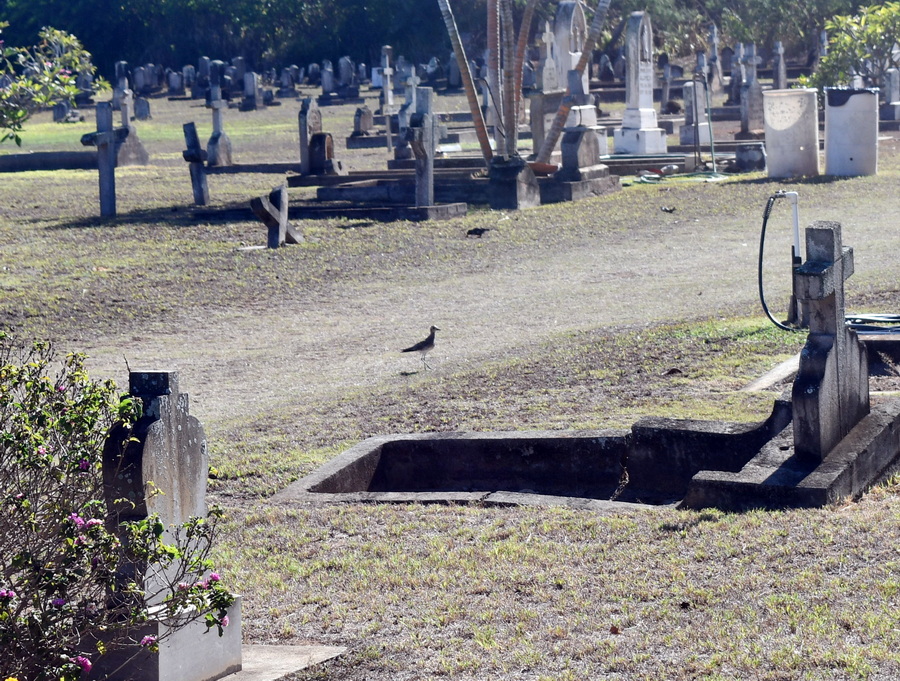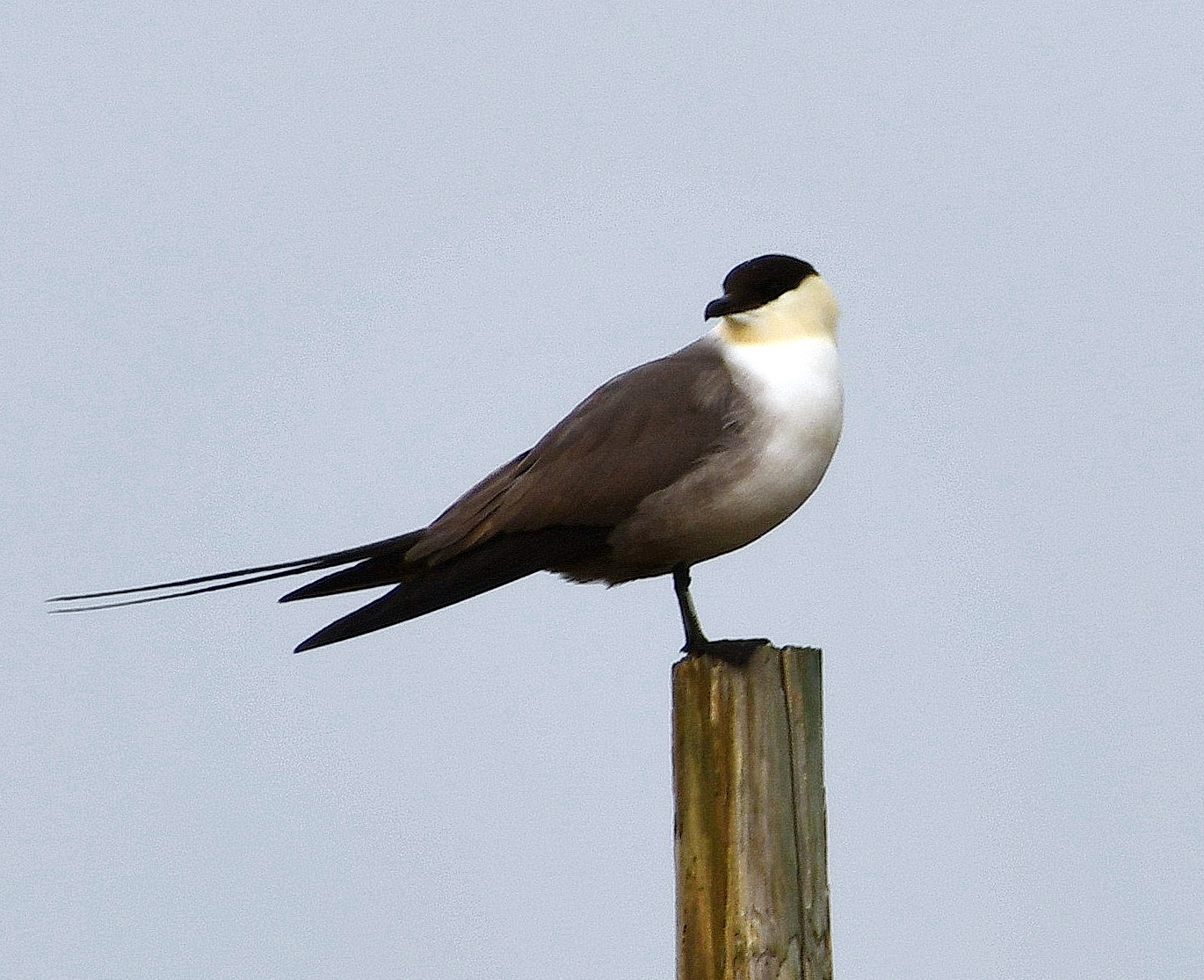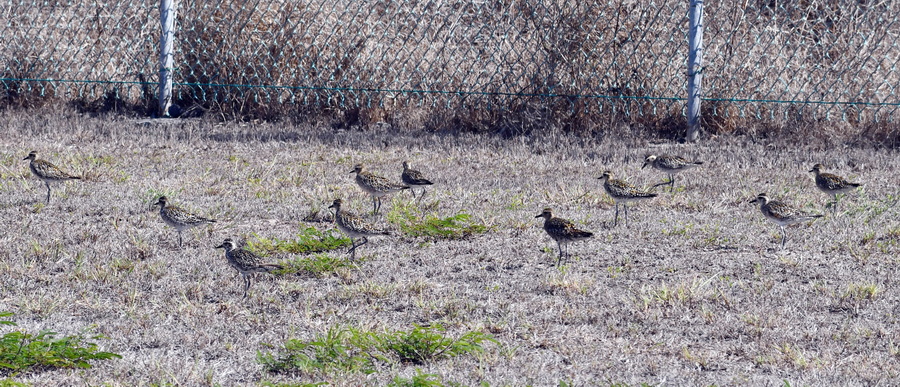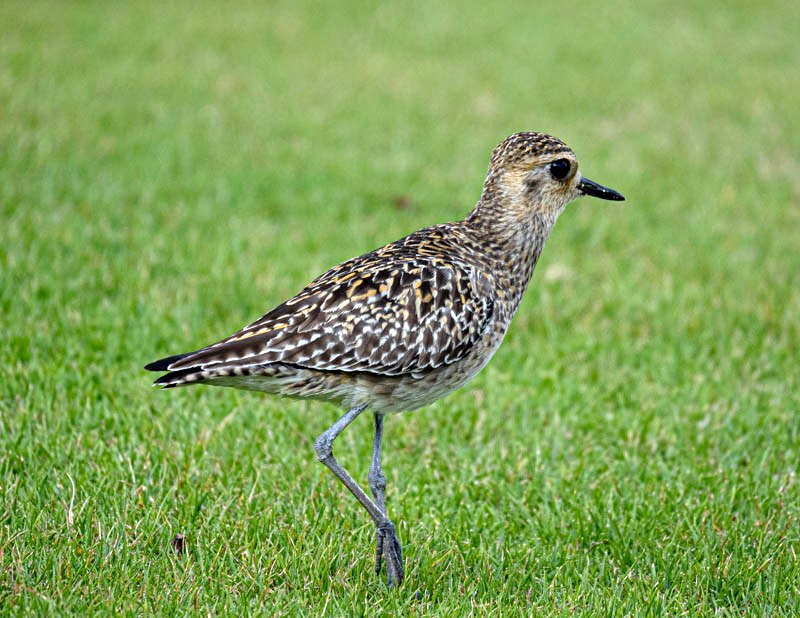
Puuiki Cemetery, Waialua, September 11, 2021. ©Susan Scott
November 29, 2021
Although today, December 1st, is the official start of the Hawaii Audubon Society’s Kolea Count, plover lovers have already been giving our marvelous shorebirds the attention they deserve. In the 2021 ARRIVAL report, we had 492 entries noting the arrival of 1,180 birds.
In July, Kolea watchers recorded 120 plovers. A few were on Kauai and Hawaii Island, but most reports were on Oahu, with the Waipio Peninsula Soccer Park being a hot spot. The plover-reporter wrote, “I have been checking the Waipio Soccer Fields and watching the numbers go up from 7 to 12 in mid-July (not sure if they were early returnees or birds that didn’t make the commute) and today, July 31, I counted 65 to 70.”
(That observer is not interested in doing a winter count so the park is still available.)
Professional naturalist, Lance Tanino, reported the first Kolea return of the season on July 14th at Kalaoa (west Hawaii Island, north of Kailua-Kona.) Lance reported that the bird was in partial breeding plumage. Nesting Kolea begin to molt their breeding-colored feathers while sitting on their eggs in Alaska.
Plover expert, Wally Johnson, says that early returns usually mean one of two things. Either the parent had a super-successful nesting season, raising chicks that matured early, or the parent had an unsuccessful season, and didn’t raise chicks at all.
Nest failures can be due to predation, bad weather, or accidents. Arctic fox, jaegers, and ravens routinely prey on eggs and chicks. Storms sometimes overwhelm parents and offspring, and occasionally eggs and chicks get trampled when herds of caribou migrate across the tundra.

This Jaeger (pronounced YAY-gur, German for hunt) is a fast-flying gull relative that, like Kolea, nests on the ground in the Arctic tundra. Jaegers are predators that eat other birds and their eggs. This post on the tundra outside Nome was a good perch for scouting prey. ©Susan Scott
On October 2nd, Craig and I counted 15 Kolea standing together, all facing the same way and looking a bit stunned. I wondered if these were newly arrived youngsters that hatched last summer, but no. Wally said that my photo showed partial breeding colors, meaning they were all adults, likely startled off the Dillingham Airport runway by sky-dive planes.

Although usually spread out on the sides of the Dillingham Airfield, these Kolea gathered on on the roadside during sky-diving activities. ©Susan Scott
Lesson learned: If your newly arrived plover shows patches or patterns of their bright spring feathers, they are adults rather than summer offspring.
Speaking of Wally, local plover enthusiast Roger Kobayashi named his yard’s bird Wally after Wally Johnson, who emailed that he is honored. When Roger puts out scrambled egg snacks for Wally, the bird appears out of nowhere. Roger wondered if Kolea have an acute sense of smell.
We don’t know. Wally Johnson writes that the birds have excellent senses of hearing and vision, but how well they can smell is unknown.

Wally (above) shows up routinely when Roger puts out pieces of scrambled egg. It’s possible the bird smells the egg, but more likely the plover sees and/or hears Roger’s movements from wherever the bird is perched. ©Roger Kobayashi
There are still lots of unknowns about Pacific Golden-Plovers, which is one of the reasons for this project. Another reason is to encourage residents and visitors to notice and enjoy Hawaii’s native birds. Please don’t worry about counting wrong. All participation, questions, and observations are welcome.
Plenty of parks, cemeteries, and other open areas are still unclaimed for this winter’s count. You don’t have to sign up to count and report, and it’s OK if more than one person counts the same area. My list is just an attempt to spread us out. I’ll be counting all over the state this year because it’s fun. I think of my scouting and counting as a Kolea Quest.
To see the count sites, go to bit.ly/2BFwVXG (this link is also on the Kolea count HOME page). This is a read-only list–only I can put an X on your chosen place. Email me at honu@susanscott.net or use the CONTACT tab and I will sign you up, keeping your email address private.
Count 3 times between now and March 31st. You be the judge of the best time of day or week for counting in your area. I won’t count at Dillingham Airport, for instance, when sky-divers are active.
Thank you for helping us learn more about our remarkable native birds, and in that helping them thrive.

A good place to watch Kolea is at a field of Tripler Army Medical Center. Here 30-35 Kolea were sighted on November 23, 2021 (about a dozen are off camera.) ©Roger Kobayashi